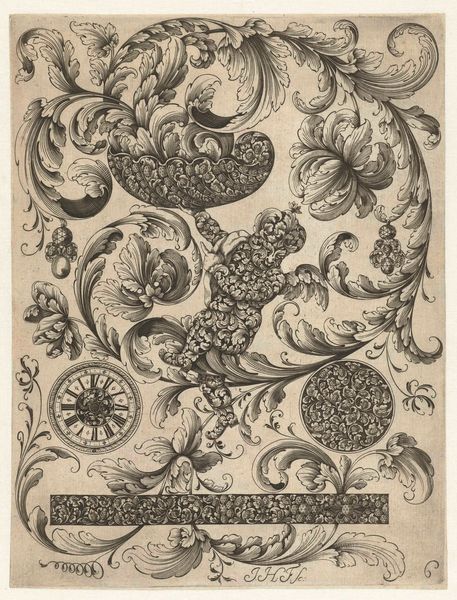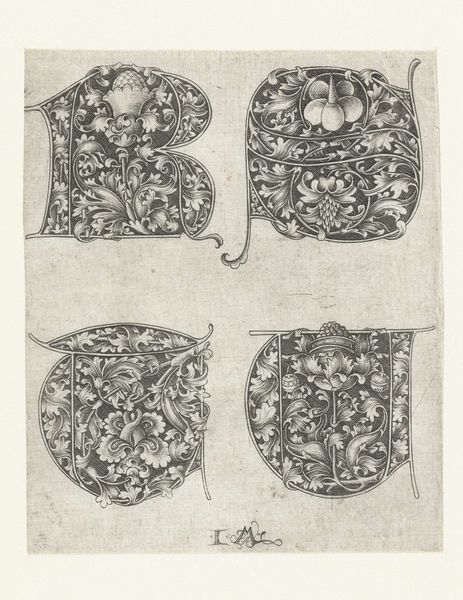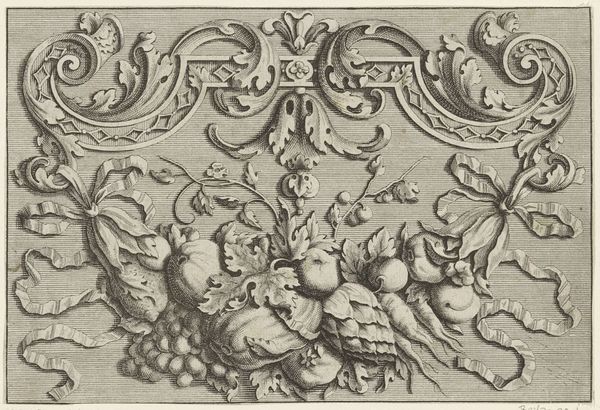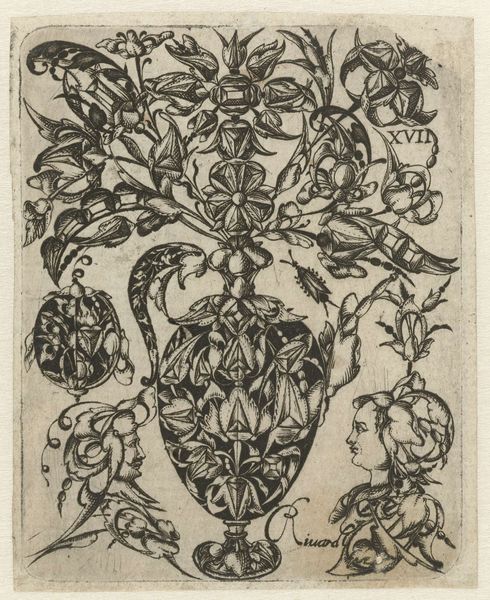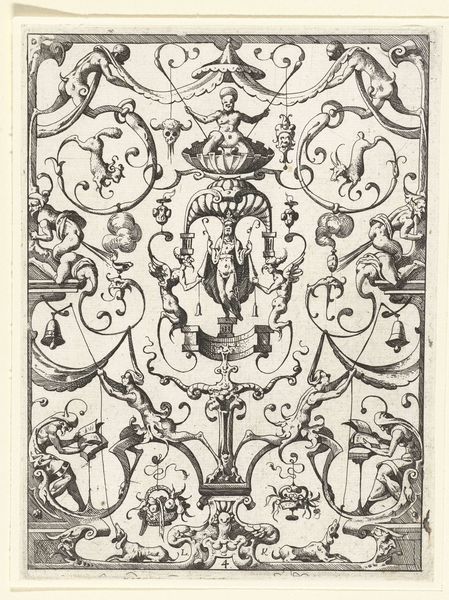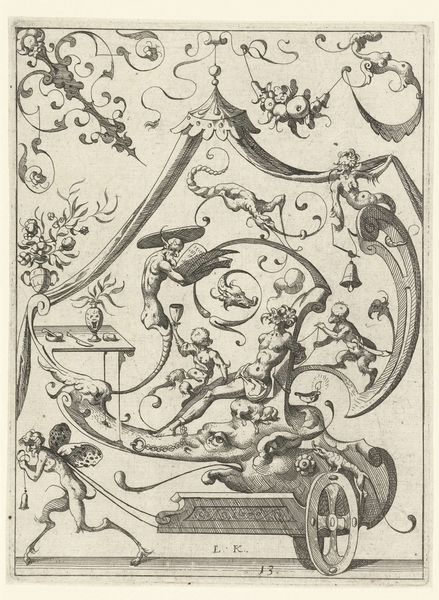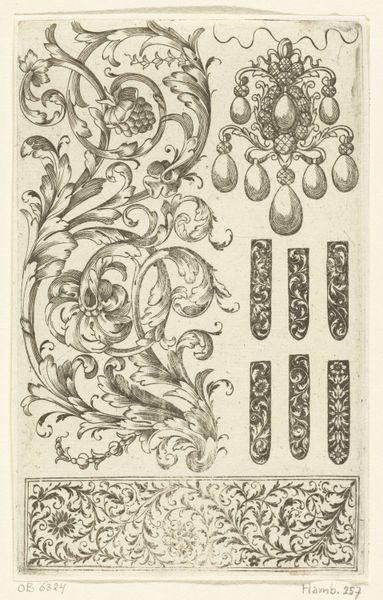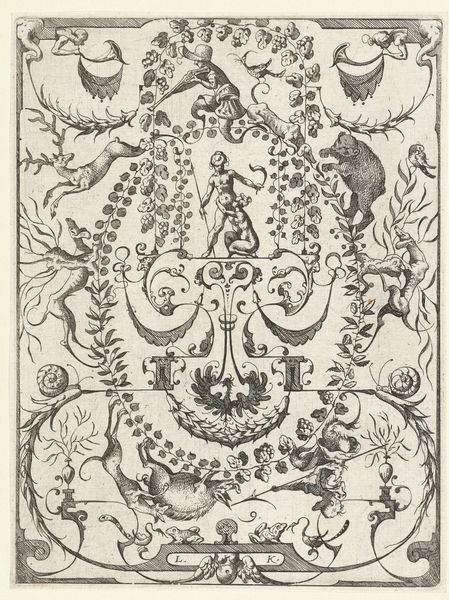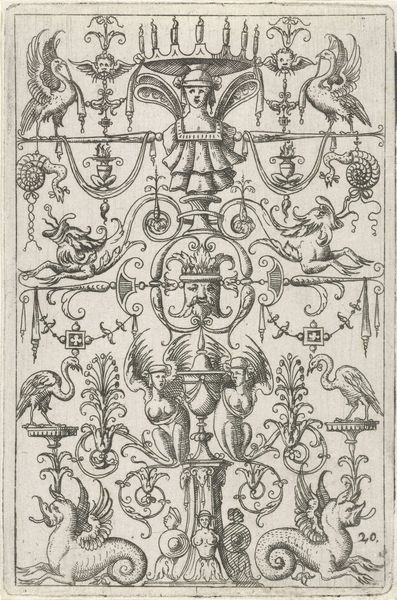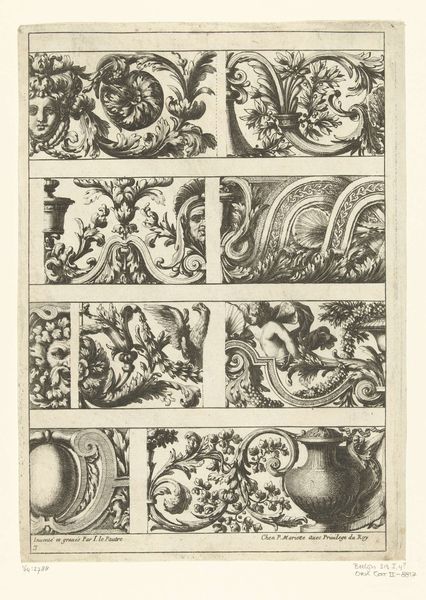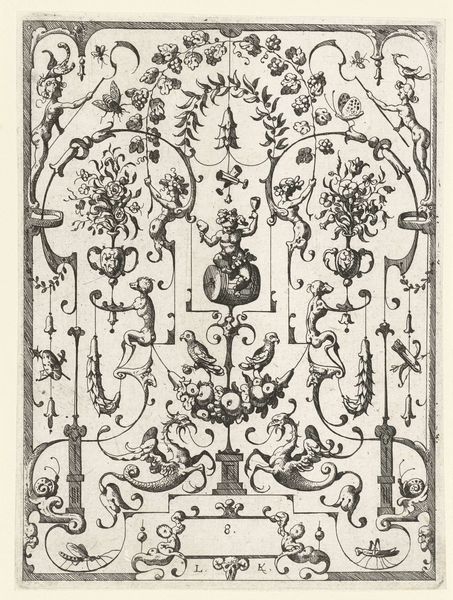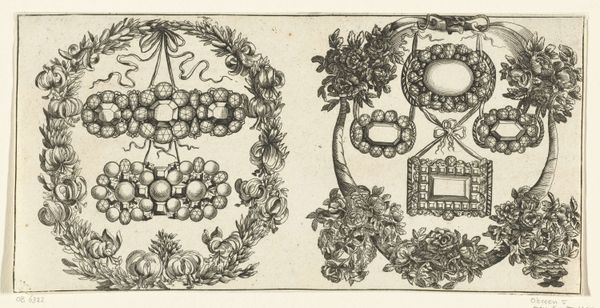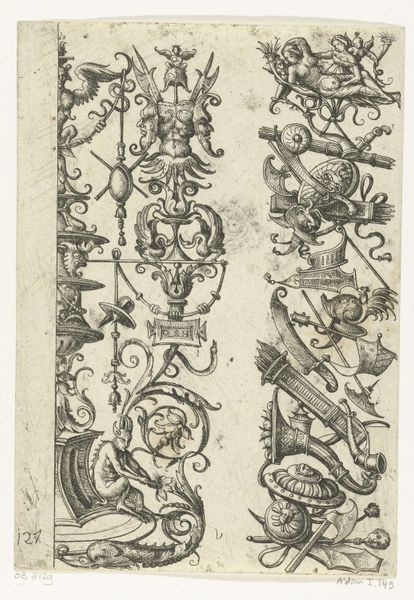
drawing, print, engraving
#
drawing
#
baroque
# print
#
pen illustration
#
pen sketch
#
old engraving style
#
geometric
#
pen-ink sketch
#
pen work
#
engraving
Dimensions: height 137 mm, width 84 mm
Copyright: Rijks Museum: Open Domain
Curator: What an exquisite piece! This is "Zeven ornamenten," or "Seven Ornaments," a work created around the 17th century by Daniel de Lafeuille, now residing here at the Rijksmuseum. It's an engraving, demonstrating an impressive display of Baroque style. Editor: My first thought is opulence. Even in monochrome, the detail evokes such richness. It almost looks like a jeweler’s sketchbook page—a record of possible earring designs, surrounded by the organic patterns they might hang against. Curator: Precisely! Lafeuille was indeed creating a visual lexicon for artisans. These weren't just idle doodles; they served a very real purpose within the socio-economic context of the era. The flourishing decorative arts relied on dissemination of patterns. Engravings like this acted as accessible models. Editor: That’s so interesting. Looking at the imagery with the adornments and geometric symmetry mixed in with acanthus leaves, cherubs and shells, it becomes a compelling demonstration of power. The very act of ornamenting objects became a social marker. This piece reminds me that art wasn’t detached or created in a bubble, and instead helped construct early ideas around luxury and wealth. Curator: Absolutely. These intricate designs played a pivotal role in projecting the values of power. Consider, for instance, the ubiquity of the Baroque style across different mediums – architecture, fashion, furniture – they created an immersive environment where notions of aristocracy were reinforced visually. Editor: And if we analyze beyond the objects of luxury, we might explore this era's impact on cultural appropriation. The exchange of materials and aesthetic practices across continents led to both innovation and exploitative labor practices. Luxury came at a price for some, didn't it? Curator: Without a doubt. Considering today's perspective, the piece becomes a lens to analyze labor and societal inequities prevalent not just back then, but that often echo into the contemporary industry, requiring us to stay aware of intersectional socio-economic effects even today. Editor: So while appreciating the aesthetics and craft, this 17th-century engraving opens broader dialogues surrounding ethics, accessibility, and power dynamics throughout history. It gives the jewels additional—weight, wouldn’t you agree? Curator: Indubitably! The ability for a single engraving to offer insights spanning craft, history, and sociopolitical commentary speaks to its inherent potency.
Comments
No comments
Be the first to comment and join the conversation on the ultimate creative platform.
